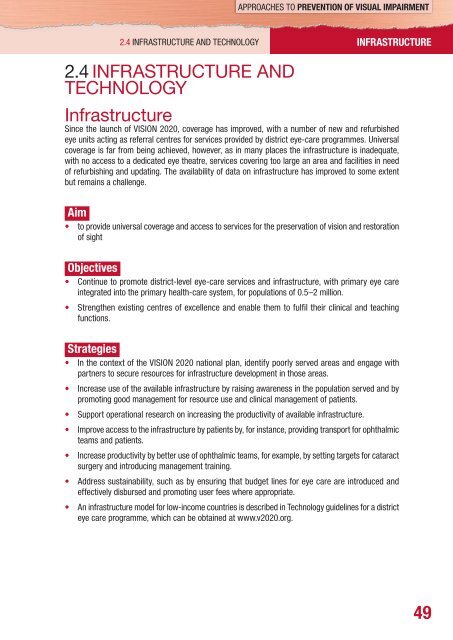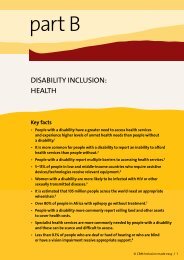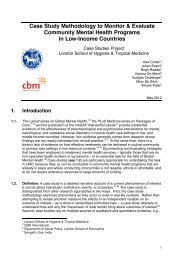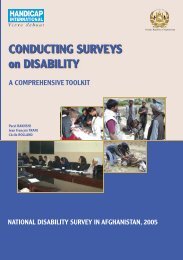Vision 2020 - World Health Organization
Vision 2020 - World Health Organization
Vision 2020 - World Health Organization
You also want an ePaper? Increase the reach of your titles
YUMPU automatically turns print PDFs into web optimized ePapers that Google loves.
APPROACHES TO PREVENTION OF VISUAL IMPAIRMENT<br />
2.4 INFRASTRUCTURE AND TECHNOLOGY INFRASTRUCTURE<br />
2.4 INFRASTRUCTURE AND<br />
TECHNOLOGY<br />
Infrastructure<br />
Since the launch of VISION <strong>2020</strong>, coverage has improved, with a number of new and refurbished<br />
eye units acting as referral centres for services provided by district eye-care programmes. Universal<br />
coverage is far from being achieved, however, as in many places the infrastructure is inadequate,<br />
with no access to a dedicated eye theatre, services covering too large an area and facilities in need<br />
of refurbishing and updating. The availability of data on infrastructure has improved to some extent<br />
but remains a challenge.<br />
Aim<br />
• to provide universal coverage and access to services for the preservation of vision and restoration<br />
of sight<br />
Objectives<br />
• Continue to promote district-level eye-care services and infrastructure, with primary eye care<br />
integrated into the primary health-care system, for populations of 0.5–2 million.<br />
• Strengthen existing centres of excellence and enable them to fulfi l their clinical and teaching<br />
functions.<br />
Strategies<br />
• In the context of the VISION <strong>2020</strong> national plan, identify poorly served areas and engage with<br />
partners to secure resources for infrastructure development in those areas.<br />
• Increase use of the available infrastructure by raising awareness in the population served and by<br />
promoting good management for resource use and clinical management of patients.<br />
• Support operational research on increasing the productivity of available infrastructure.<br />
• Improve access to the infrastructure by patients by, for instance, providing transport for ophthalmic<br />
teams and patients.<br />
• Increase productivity by better use of ophthalmic teams, for example, by setting targets for cataract<br />
surgery and introducing management training.<br />
• Address sustainability, such as by ensuring that budget lines for eye care are introduced and<br />
effectively disbursed and promoting user fees where appropriate.<br />
• An infrastructure model for low-income countries is described in Technology guidelines for a district<br />
eye care programme, which can be obtained at www.v<strong>2020</strong>.org.<br />
49

















